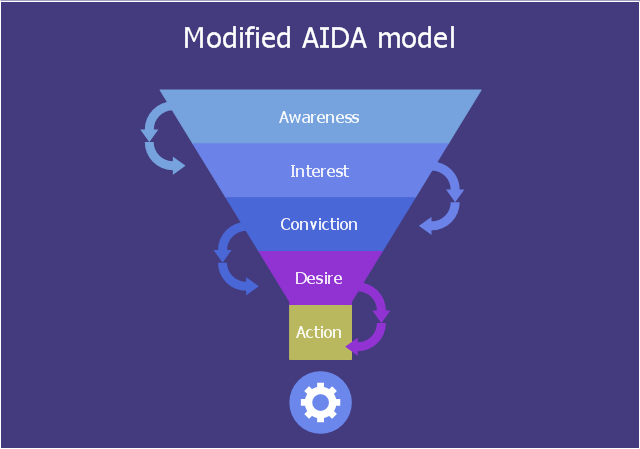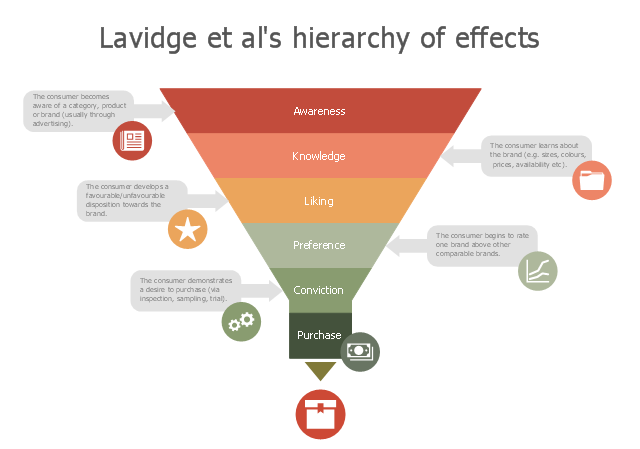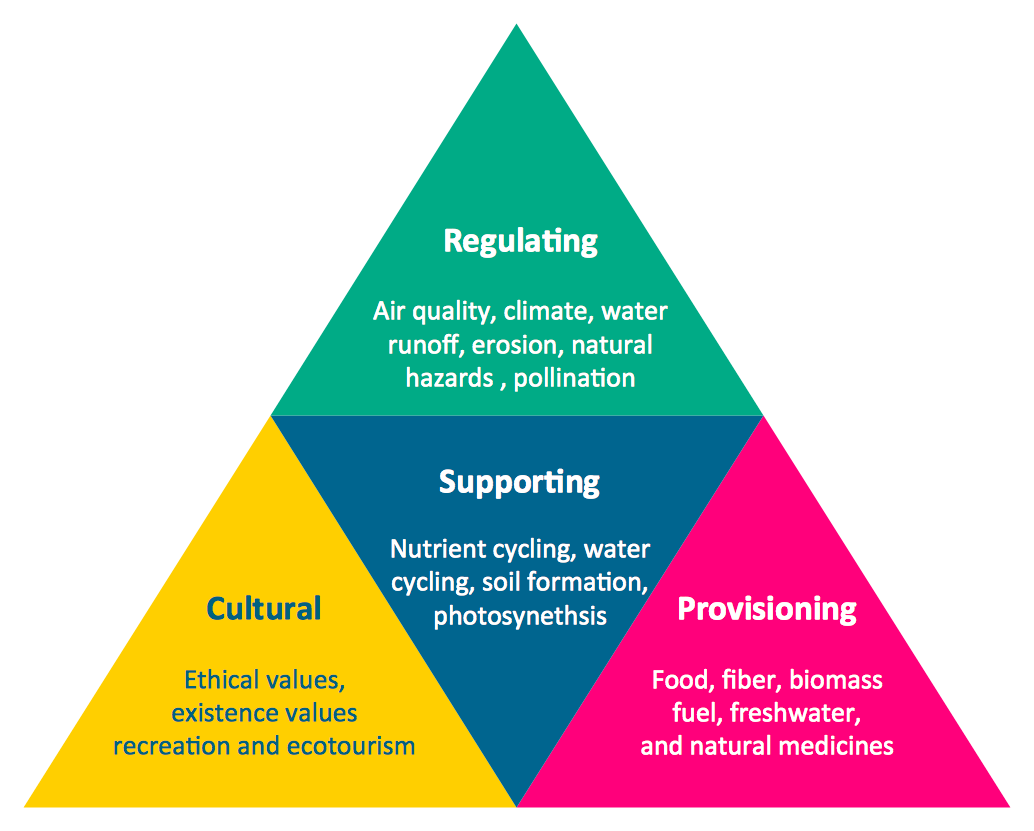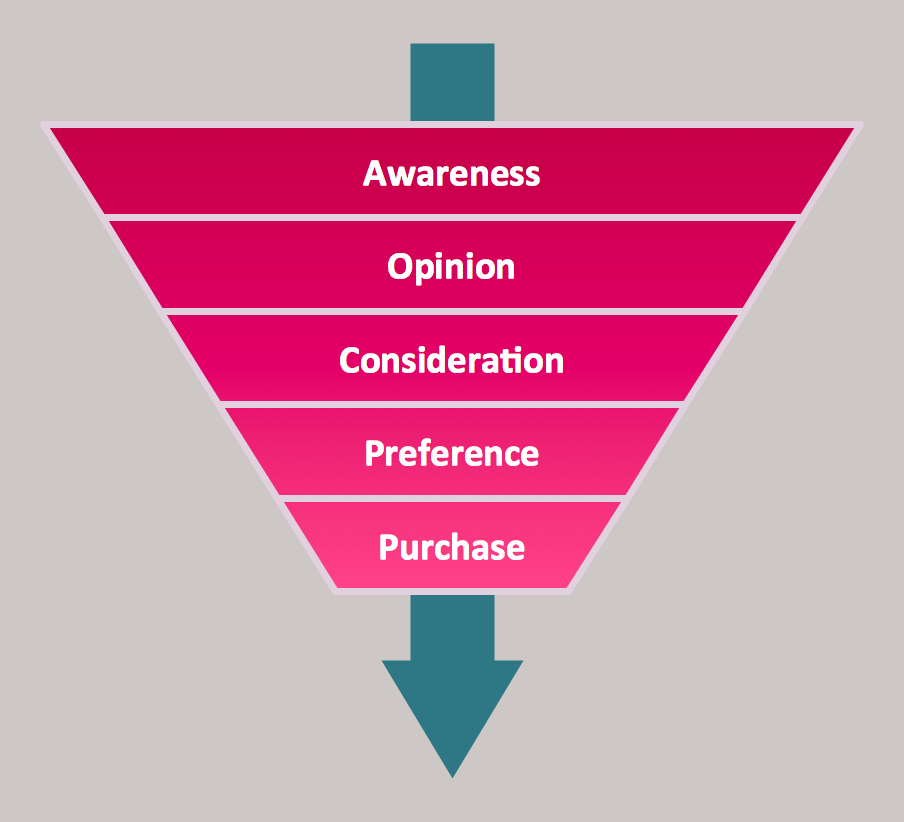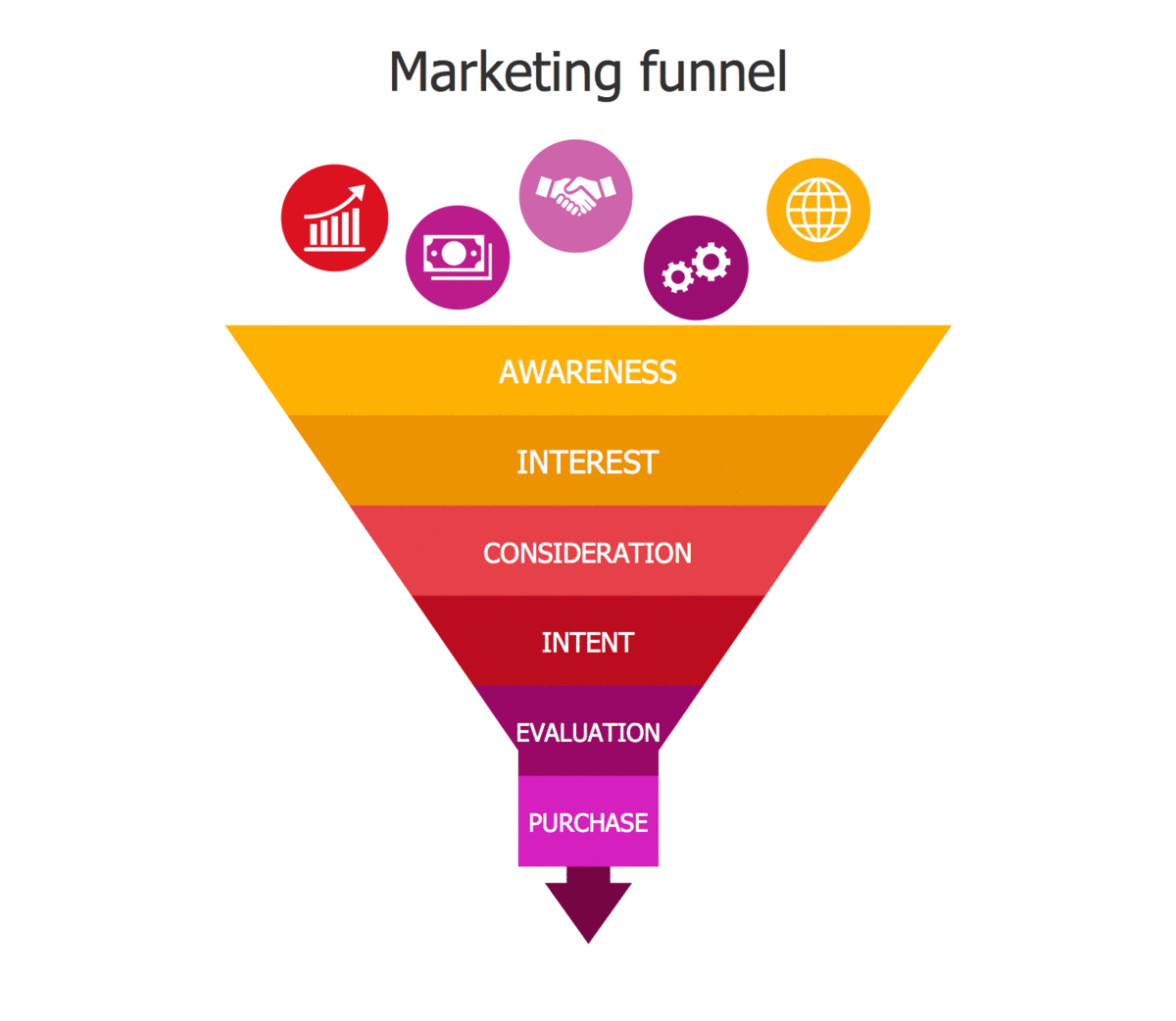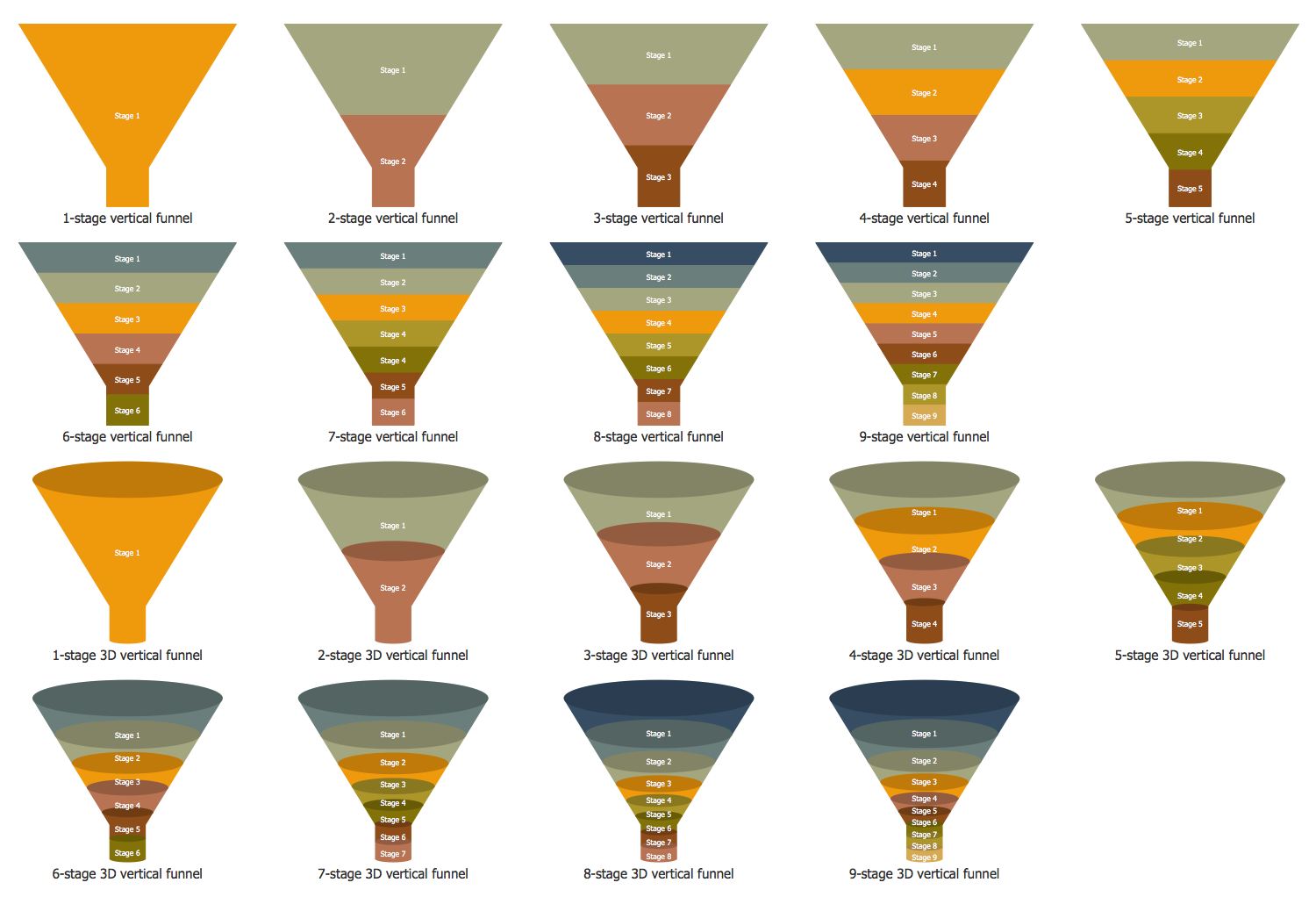"Brand awareness refers to customers' ability to recall and recognize the brand under different conditions and link to the brand name, logo, jingles and so on to certain associations in memory. It consists of both brand recognition and brand recall. It helps the customers to understand to which product or service category the particular brand belongs and what products and services are sold under the brand name. It also ensures that customers know which of their needs are satisfied by the brand through its products (Keller). Brand awareness is of critical importance since customers will not consider your brand if they are not aware of it. There are various levels of brand awareness that require different levels and combinations of brand recognition and recall. Top-of-Mind is the goal of most companies. Top-of-mind awareness occurs when your brand is what pops into a consumers mind when asked to name brands in a product category." [Brand. Brand awareness. Wikipedia]
This top brand model pyramid diagram was redesigned using the ConceptDraw PRO diagramming and vector drawing software from Wikimedia Commons file Diagram Top Brand Model.jpg. [commons.wikimedia.org/ wiki/ File:Diagram_ Top_ Brand_ Model.jpg]
This file is licensed under the Creative Commons Attribution-Share Alike 3.0 Unported license. [creativecommons.org/ licenses/ by-sa/ 3.0/ deed.en]
The example "Top brand model pyramid diagram" is included in the Pyramid Diagrams solution from the Marketing area of ConceptDraw Solution Park.
This top brand model pyramid diagram was redesigned using the ConceptDraw PRO diagramming and vector drawing software from Wikimedia Commons file Diagram Top Brand Model.jpg. [commons.wikimedia.org/ wiki/ File:Diagram_ Top_ Brand_ Model.jpg]
This file is licensed under the Creative Commons Attribution-Share Alike 3.0 Unported license. [creativecommons.org/ licenses/ by-sa/ 3.0/ deed.en]
The example "Top brand model pyramid diagram" is included in the Pyramid Diagrams solution from the Marketing area of ConceptDraw Solution Park.
 Funnel Diagrams
Funnel Diagrams
Funnel Diagrams solution including wide range of funnel diagram samples, sales funnel examples, and vector design elements, makes the ConceptDraw DIAGRAM ideal for funnel management and creation the Funnel Diagrams of different types and designs, AIDA Model, AIDAS, ACCA Dagmar, Rossiter-Percy Model, Sales funnel, Marketing funnel, Search funnel, Brand funnel, Purchase funnel, Lead funnel, Conversion funnel, Business funnel, etc. You are free to choose to place your funnel object horizontally or vertically, you can use the objects with desired quantity of sales funnel stages, as well as to modify their size, color filling, and other parameters to make exceptionally looking Funnel diagrams fully responding to your desires.
This funnel diagram sample shows 5 stages of modified AIDA model: Awareness, Interest, Conviction, Desire, Action. [Barry, T.E. and Howard, D.J., "A Review and Critique of the Hierarchy of Effects in Advertising," International Journal of Advertising, vol 9, no.2, 1990, pp. 121–135]
"AIDA is an acronym that stands for Attention, Interest, Desire and Action. The AIDA model is widely used in marketing and advertising to describe the steps or stages that occur from the time when a consumer first becomes aware of a product or brand through to when the consumer trials a product or makes a purchase decision. Given that many consumers become aware of brands via advertising or marketing communications, the AIDA model helps to explain how an advertisement or marketing communications message engages and involves consumers in brand choice. In essence, the AIDA model proposes that advertising messages need to accomplish a number of tasks in order to move the consumer through a series of sequential steps from brand awareness through to action (purchase and consumption)." [AIDA (marketing). Wikipedia]
The funnel diagram example "Modified AIDA model" was designed using ConceptDraw PRO software extended with Funnel Diagrams solution from Marketing area of ConceptDraw Solution Park.
"AIDA is an acronym that stands for Attention, Interest, Desire and Action. The AIDA model is widely used in marketing and advertising to describe the steps or stages that occur from the time when a consumer first becomes aware of a product or brand through to when the consumer trials a product or makes a purchase decision. Given that many consumers become aware of brands via advertising or marketing communications, the AIDA model helps to explain how an advertisement or marketing communications message engages and involves consumers in brand choice. In essence, the AIDA model proposes that advertising messages need to accomplish a number of tasks in order to move the consumer through a series of sequential steps from brand awareness through to action (purchase and consumption)." [AIDA (marketing). Wikipedia]
The funnel diagram example "Modified AIDA model" was designed using ConceptDraw PRO software extended with Funnel Diagrams solution from Marketing area of ConceptDraw Solution Park.
This funnel diagram sample shows 6 stages of Lavidge et al's hierarchy of effects: Awareness, Knowledge, Liking, Preference, Conviction, Purchase.
"The hierarchy of effects developed by Lavidge in the 1960s is one of the original hierarchical models. It proposes that customers progress through a sequence of six stages from brand awareness through to the purchase of a product.
Stage 1: Awareness - The consumer becomes aware of a category, product or brand (usually through advertising).
Stage 2: Knowledge - The consumer learns about the brand (e.g. sizes, colours, prices, availability etc).
Stage 3: Liking - The consumer develops a favourable/ unfavourable disposition towards the brand.
Stage 4: Preference - The consumer begins to rate one brand above other comparable brands.
Stage 5: Conviction - The consumer demonstrates a desire to purchase (via inspection, sampling, trial).
Stage 6: Purchase - The consumer acquires the product.
Hierarchical models have been widely adapted and many variations can be found, however, all follow the basic sequence which includes Cognition (C)- Affect (A) - Behaviour (B) and for this reason, they are sometimes known as C-A-B models." [Brand awareness. Wikipedia]
The funnel diagram example "Lavidge et al's hierarchy of effects" was designed using ConceptDraw PRO software extended with Funnel Diagrams solution from Marketing area of ConceptDraw Solution Park.
"The hierarchy of effects developed by Lavidge in the 1960s is one of the original hierarchical models. It proposes that customers progress through a sequence of six stages from brand awareness through to the purchase of a product.
Stage 1: Awareness - The consumer becomes aware of a category, product or brand (usually through advertising).
Stage 2: Knowledge - The consumer learns about the brand (e.g. sizes, colours, prices, availability etc).
Stage 3: Liking - The consumer develops a favourable/ unfavourable disposition towards the brand.
Stage 4: Preference - The consumer begins to rate one brand above other comparable brands.
Stage 5: Conviction - The consumer demonstrates a desire to purchase (via inspection, sampling, trial).
Stage 6: Purchase - The consumer acquires the product.
Hierarchical models have been widely adapted and many variations can be found, however, all follow the basic sequence which includes Cognition (C)- Affect (A) - Behaviour (B) and for this reason, they are sometimes known as C-A-B models." [Brand awareness. Wikipedia]
The funnel diagram example "Lavidge et al's hierarchy of effects" was designed using ConceptDraw PRO software extended with Funnel Diagrams solution from Marketing area of ConceptDraw Solution Park.
Pyramid Chart Examples
Pyramid Charts and Triangle Diagrams are used to visually structure the topics and progressively order the quantitative data. They allow to illustrate hierarchical structure of the topics, proportional, interconnected and containment relations among the topics. The multilevel Pyramids and Triangle diagrams are constructed oriented up or down and divided into several horizontal slices. They are effectively used to represent marketing strategies, social strategies, information systems, market value, etc., to illustrate presentations, websites, documents, reports in business, finances, sales, management, marketing, media, training, consulting, and many other fields. To maximize the efficiency in drawing the Pyramid Charts, use the ConceptDraw DIAGRAM diagramming and vector drawing software extended with Pyramid Diagrams solution from Marketing area, which contains the set of Pyramid Chart examples, samples, templates and vector design elements of triangular diagrams and pyramids with different quantity of levels for various needs.Pyramid Diagram
The purchase or purchasing funnel is a consumer focused marketing model which illustrates the theoretical customer journey towards the purchase of a product or service.Marketing Sales Funnel Examples
In order to boost your marketing results and so to increase the sales, the ConceptDraw DIAGRAM diagramming and vector drawing software can be used. The last-mentioned tool was developed especially for business specialists who seek for the right application to use in their field, including marketing. Having the Funnel Diagrams solution to use while working in the ConceptDraw DIAGRAM application may simplify your tasks of creating the professionally-looking marketing and sales funnel diagrams, such as the purchase ones.Funnel Diagram
Funnel diagram can be also known as a funnel chart being similar to a stacked percent bar chart. This drawing is a type of chart that can be often used in order to represent the stages in some sales process. It can be also used for showing the amount of potential revenue for each of the described stages.In order to make a funnel diagram, the Funnel Diagrams solution can be used while working in the ConceptDraw DIAGRAM diagramming and drawing software. Having the pre-made design elements as well as the examples of funnel diagrams, the Funnel Diagrams solution allows any ConceptDraw DIAGRAM user to make their own unique as well as professionally-looking drawings.
Competitor Analysis
Competitor analysis is a first and obligatory step in elaboration the proper corporate marketing strategy and creating sustainable competitive advantage. Use powerful opportunities of numerous solutions from ConceptDraw Solution Park for designing illustrative diagrams, charts, matrices which are necessary for effective competitor analysis.
 Pyramid Diagrams
Pyramid Diagrams
Pyramid Diagrams solution extends ConceptDraw DIAGRAM software with templates, samples and library of vector stencils for drawing the marketing pyramid diagrams.
- Top brand model - Pyramid diagram | Pyramid Diagrams | SWOT ...
- Top brand model - Pyramid diagram | Pyramid Diagrams | Brand ...
- Pyramid Chart Examples | Top brand model - Pyramid diagram ...
- Brand essence model - Wheel diagram | Competitor Analysis ...
- Block diagram - Branding strategies | Brand essence model - Wheel ...
- Pyramid Chart Examples | How to Make SWOT Analysis in a Word ...
- Pyramid Chart Examples | Pyramid Diagram | Priority pyramid ...
- Dna model of seduction - Triangular diagram | Pyramid Chart ...
- Education pictograms - Vector stencils library | Dna model of ...
- Positioning Map | Positioning map | What is SWOT Analysis in ...

